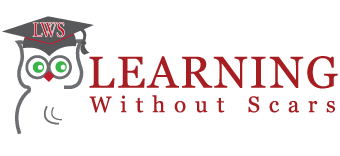Learning Without Scars was created to fill a void in the Capital Goods Industries, specifically the light and heavy equipment space.
With technical schools closing at an alarming rate the markets we serve were becoming unable to find the talents and skills they required in the operational areas of the business, parts and service specifically. I have written extensively on the German trade school structures and the benefits it provides German employers. We no longer have a viable trade school preparation for the parts business.
To that end, here at LWS we have developed training programs for the parts counter job functions. We have the same for the parts office and the service office. We also have programs for the parts warehouse, for service writers and service foreman and lead hands. All of these programs were created after dealer customers had expressed a need and a desire to help employee development.
The report from Edward Gordon, a colleague, is a clear affirmation of why we are doing what we do in training.
I would like to pose a question to everyone. What are you doing to attract new employees, to retain the ones you have and to develop all of your employees to meet the needs of future job?
There is a critical need on our Industry. Without the proper number of talented and skilled employees your business is at risk.
The Time is NOW.
Please read this Edward Gordon article.
Knowledge Shock Part V: Job Evolution Causes Skill Shortages and A Search for Solutions
Job Evolution 1970-2010
In 1970 John, whose father was a plumber, graduated from high school. He began working in a Midwestern automotive-parts factory. It had an entry-level job training program and paid him a good wage. At that time, about 66 percent of entry-level jobs in manufacturing and other employment sectors required only a high school diploma. Business management and professional positions required a college education. Also, apprenticeship completion or specific skill-training certificates were needed to qualify for some mid-skilled occupations.
Fast forward to 1990 when John’s daughter Linda became an office file clerk after graduating from high school. She found out technologies had changed occupational skill requirements in both offices and factories. High school graduation was no longer a passport to the middle class. By 1990, 55 percent of jobs required education or training beyond high school. However, many employers offered workers on-the-job training.
John’s grandson, George, was always interested in cars. After high school graduation in 2010, George decided to seek employment in an auto-production plant. But he was surprised to discover that a largely unrecognized Fourth Industrial Revolution had radically changed entry-level jobs requirements. Robots now performed many repetitive tasks on car assembly lines. George also learned that this local auto factory only sought workers who could operated computer-controlled equipment. Working on teams, they also need needed to have the technical skills required to assemble many different auto models in smaller runs as sales orders came in from the manufacturer’s dealer network. The plant had no entry-level job training. Applicants were expected to be job ready from day one!
By 2010, low-skill jobs had declined to only 33 percent of the U.S. labor market. They were also low paying jobs. The majority of even mid-level occupations now required special career training beyond high school.
Talent Shortages by the Numbers
In 2010 there were about 97 million mid-level and higher skilled jobs across the United States. Yet only 43 million American workers met the general education and career training requisites to fill them. U.S. businesses made up a national gap of 54 million skilled workers through increasing automation, importing skilled foreign workers, poaching workers from competitors, or exporting higher skilled jobs to overseas locations with the requisite talent pool. Only about 20 percent of U.S. businesses offered job training programs. This talent shortfall resulted in 4 million vacant jobs across the U.S. economy.
Over the next decade the skills-jobs disconnect continued to expand. By 2017 two-thirds of jobs in the U.S. labor market required workers with post-secondary specialized career training. International talent shortages had also increased, making it much more difficult for U.S. businesses to either import talent or find an off-shore location with the needed skilled workers. A global talent showdown had begun in earnest. In 2017 nine million jobs remained unfilled across the United States. The U.S. Chamber of Commerce estimates a loss of $26,000 per vacant job in profit or productivity for a business. This represents an over $230 billion loss to the U.S. economy.
The U.S. talent shortfall is a significant part of a much broader global talent train wreck. The worldwide estimate of 2022 job vacancies range from 45 to 95 million skilled positions. Many recent surveys of American executives place this talent crisis at the top or near the top of management concerns. For example, a 2018 survey conducted by the Associated General Contractors of America indicated that this industry will be short two million skilled craft professionals by 2020. A recent National Association of Manufacturers survey for the first time reported “attracting and retaining a quality workforce” as the respondents’ top business challenge.This was also the case in the February survey of the National Federation of Independent Businesses. Ninety percent of businesses seeking workers reported “few or no qualified applicants” for open positions.
Two Major Skills Initiatives
Two significant approaches for confronting the escalating shortages of skilled workers are gaining momentum. The “2017 Training Industry Report” (Training, November 2017) showed that U.S. businesses made an unprecedented $23 billion increase in worker training in the past year. Total expenditures rose from $70.6 billion to $93.6 billion or 32.5 percent. The majority of these funds were invested in specific job raining programs for workers rather than in management education programs as in years past. Over the past few months there has been some increase in the labor participation rate. It is an indication that more companies are again beginning to offer job training to new hires. This is opening the possibility of employment to so called “discouraged workers” who until recently have been sitting on the U.S. labor-market sidelines because their skills were not up-to-date.
A second more comprehensive approach to tacking the current skills crisis are regional public-private partnerships focused on economic development and reforming the education-to-employment system. These Regional Talent Innovation Networks (RETAINs) offer a process for reinventing their local talent-delivery systems. In the short term, these cross-sector initiatives composed of businesses, educational institutions, unions, government agencies, and non-profit community groups focus on retraining workers and the unemployed with the skills currently needed to fill the vacant jobs of regional employers. RETAINs are of particular value to small businesses as they offer a viable way of pooling their resources to inform, attract, and prepare skilled workers to fill jobs.
In the long term, RETAINs seek to rebuild the workforce pipeline through raising K-12 educational standards and implementing career-skills preparation programs. Beginning in elementary school students need to be well grounded in reading, writing, mathematics, and verbal communication skills. To accommodate the wide diversity of students’ aptitudes and interests, a wider diversity of high school programs are needed such as STEM academies, career education programs, and pre-apprenticeship and apprenticeship options. This means more students will leave high school with solid educational foundations that prepare them to successfully complete the post-secondary career education and training needed to fill today’s and tomorrow’s ever-rising job requirements. It is notable that the High School Inc. Foundation (previously profiled in Gordon Report) has received the 2018 Citation for Career Education and Excellence from the American Association for Career Education for its leadership role in the development of six career academies at the Valley High School in Santa Ana, California. The High School Inc. Foundation is a good example of the over 1,000 RETAINs now operating across America.
More information on many local RETAIN “brands” across the United states is now available in an updated paperback edition of Future Jobs: Solving the Employment and Skills Crisis published by Praeger in March 2018. It offers many case studies of the the accomplishments of these cross-sector partnerships in updating regional training and education programs and thus reviving local economies.
The Urgent Need for Action Addressing the Skills Crisis
Unless business investments in job training are drastically increased and the RETAIN movement grows exponentially, by 2022 the skills-jobs disconnect will have a dire impact on the U.S. economy. America is facing a demographic tsunami of 30 million baby boomers retiring from the workforce. In the cohort of millennials entering the workforce, only about thirty percent have the education and skills needed for advanced technology workplaces, but at least sixty percent need to be at this level for the high tech, knowledge-based economy of 2022.
The Gordon Report “Knowledge Shook Series” has spotlighted some of the most crucial forces behind the jobs-skills crisis. We have examined how American culture across the business community, schools, unions, and parents has failed to keep pace with the significant knowledge expansion required by technology change. We have also seen how popular culture can promote addiction to social media and other internet venues that reduce cognitive development and interpersonal skill growth. Over the past decade Knowledge Shock has morphed into Job Shock as many American workers now fear that escalating technology changes have placed their jobs at great risk. Inventing technology has proved to be the easy part; changing society’s cultural willingness to place education and workforce training on steroids remains very difficult.
As technology has continued to expand job requirements, simplistic populist solutions for protecting jobs and industries are being advanced by the extreme right and left of the U.S. political spectrum. Populists offer a new form of tribalism. By dividing society into many warring factions, they seek to attack and eliminate the “enemy” opposition rather than pursue consensus through negotiation. This tribalism is in direct opposition to the democratic beliefs and traditions upon which our great American Republic was founded and has developed over the past 242 years. We remain fundamentally opposed to this attempt to undermine U.S. society.
As we contend with this social divisiveness, the American general public needs to be made aware of the urgent need to answer the two great questions of Job Shock.
- Why has technology growth clearly outpaced the knowledge development of the U.S. workforce?
- How can we develop a new consensus that will lead to the overall growth of a well-educated American workforce?
The answers to these social issues will define how well we make the historic employment transition that America now faces. Failure is not an option.
Edward E. Gordon is president and founder of Imperial Consulting Corporation (www.imperialcorp.com). His book, Future Jobs: Solving the Employment and Skills Crisis, a winner of an Independent Publishers award, is now available in an updated 2018 paperback edition.

